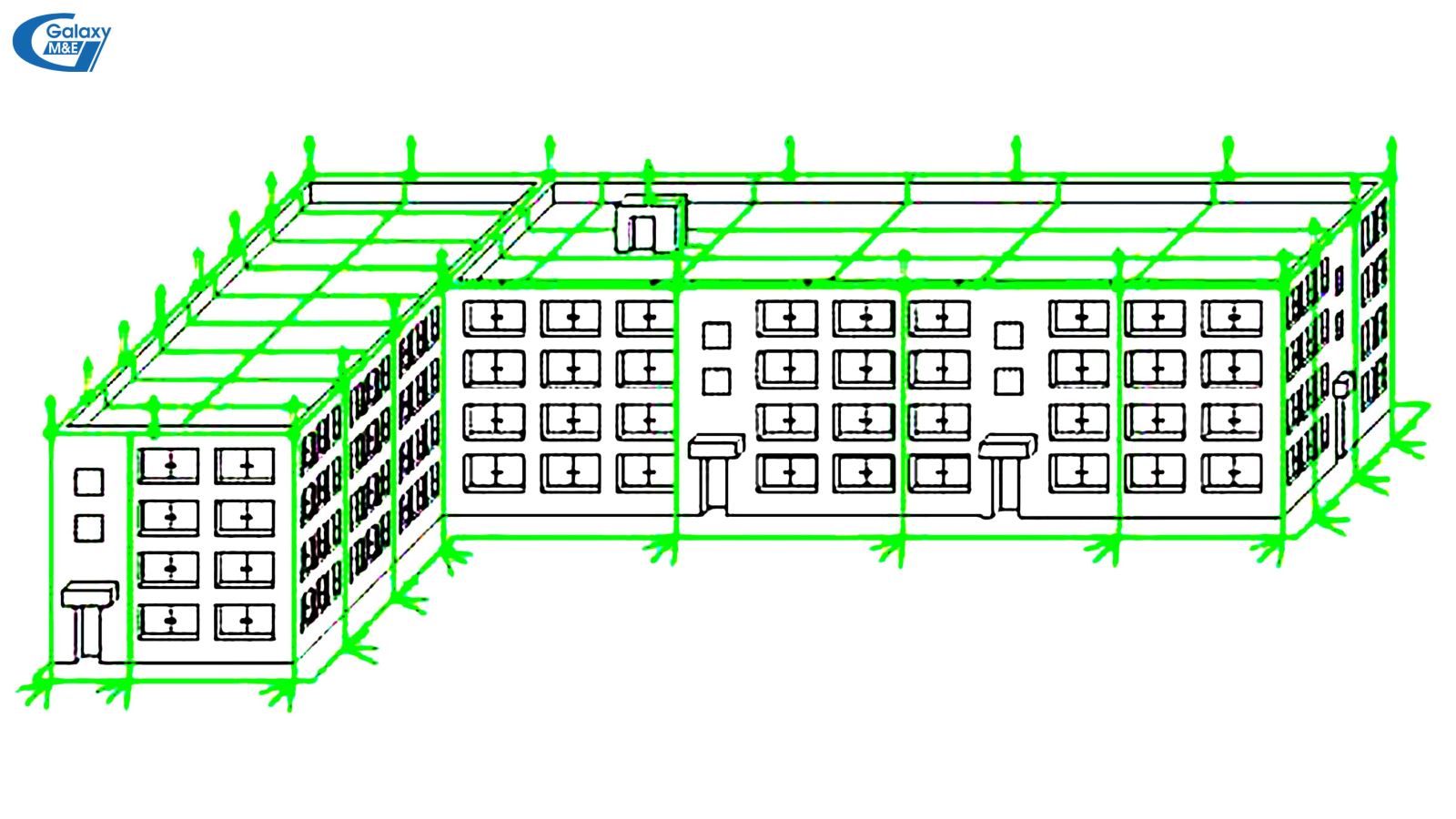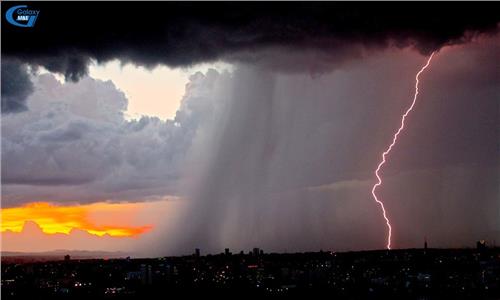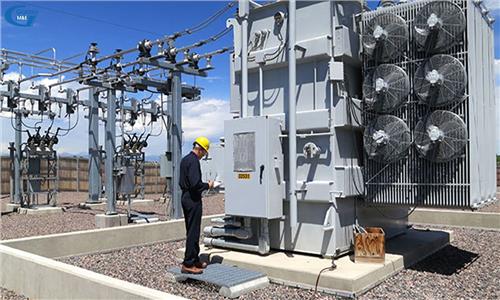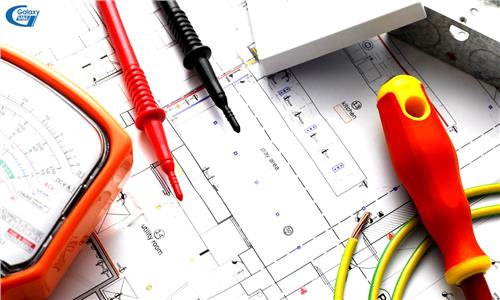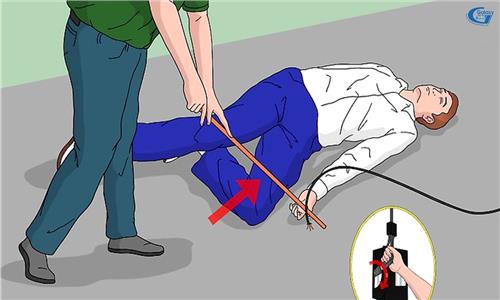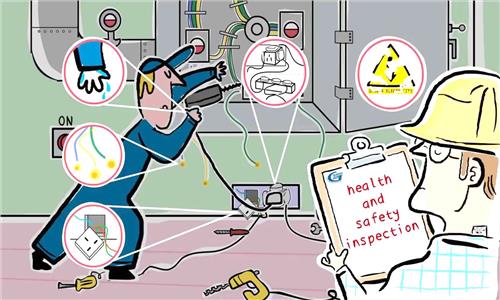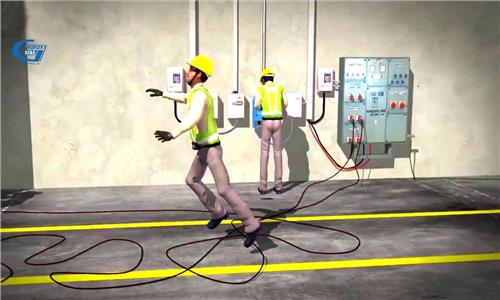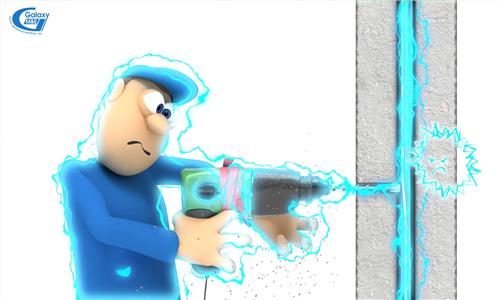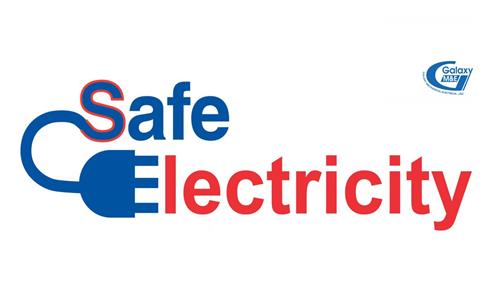Lightning protection system and 5 related issues | Galaxy M&E Contractors
For projects requiring strict technical and safety requirements, especially in relation to lightning protection systems, investors should explore and select experienced construction contractors.
In addition to understanding the causes of lightning and its impact on the environment, the basic knowledge of lightning protection methods, effectiveness and difficulties in implementation is a matter that attracts a lot of attention from investors. A lightning protection system can cost up to several million dollars, sometimes only a few hundred million. This depends on the importance of the works as well as the lightning protection methods applied.
The following article will open up scientific topics to support businesses, organizations and individuals to build an electromechanical and lightning protection system effectively.
1. How many lightning protection levels are there?
Level I: Construction works containing flammable / explosive materials, radioactive substances, toxic gases (chemical); or ones that emit flammable gases, vapors, dust or fibers that are able to combine with air or other oxidizing agents to form an explosive mixture. Those ones without effective lightning protection systems can easily lead to deadly accident. This level also requires the highest level of lightning protection.
Level II: Works that store or contain flammable substances / gases / materials or precursors / explosives only cause minor or non-fatal damage. This type are classified as Level II. Warehouses for storing explosives and combustibles contained in metal containers are also listed in this Level.
Level III: All the other construction works. Some works which should belong to Level III, but have a special political and economic importance, has been upgraded to Level II such as Government-level working offices, Radio, Television and houses for senior politicians…
2. What does the lightning protection work include?
- For works in Level I and Level II: Lightning protection from direct lighting, lightning protection from electrostatic induction and electromagnetic induction, and lightning protection from metal lines and pipes leading into works.
- For works in Level III: Lightning protection from direct lighting, and lightning protection from metal lines and pipes leading into works.
- For level I and II lightning protection works, all metal machines, tanks and containers must be grounded. This grounding must be performed by welding to ensure lightning conductivity.
- Low buildings located in areas with many tall buildings that have been protected against lightning or surrounding houses with taller trees may not need direct lightning protection.
- When conducting lightning protection for buildings, the mechanical and electrical construction units must fully investigate data on geology, topography, climate, surrounding environment, structural features as well as characteristics of the work. When preparing design documents, it is necessary to ensure safety in terms of protection, sustainability during use, and finally to the work's beauty.
3. Types of lightning
- Lightning strikes directly into the building;
- Lightning spreads along lines into the building;
- Electrostatic lightning rods for metal structures of constructions;
- Lightning induction for loops, paths.
4. Lightning protection methods being used in Vietnam
Not only in Vietnam but also many countries in the world, researches on effective lightning protection methods are still ongoing and have not ended. The current popular methods have different advantages and disadvantages. So what exactly?
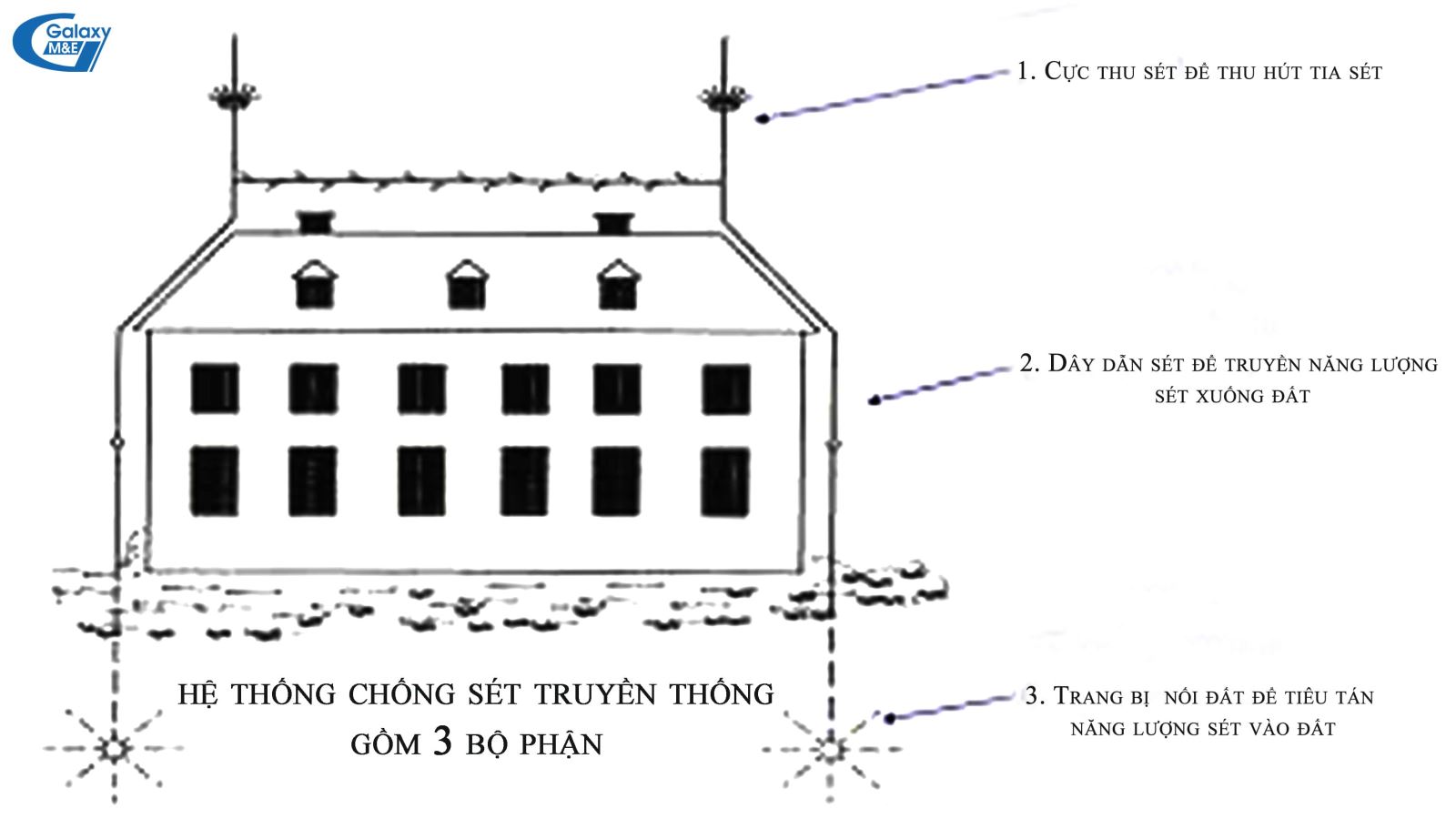
Traditional lightning protection method.
Note:
| HỆ THỐNG CHỐNG SÉT TRUYỀN THỐNG GỒM 3 BỘ PHẬN | TRADITIONAL LIGHTNING PROTECTION SYSTEM INCLUDES 3 PARTS |
| CỤC THU SÉT ĐỂ HÚT TIA SÉT | LIGHTNING ROD TO ABSORB LIGHTNING |
| DÂY DẪN SÉT ĐỂ TRUYỀN NĂNG LƯỢNG SÉT XUỐNG ĐẤT | LIGHTNING WIRE GUIDE LEADS THE CURRENT CREATED FROM THE LIGHTNING TO THE GROUND |
| TRANG BỊ NỐI ĐẤT ĐỂ TIÊU TAN NĂNG LƯỢNG SÉT VÀO ĐẤT | EARTHING DEVICE |
4.1. Traditional lightning protection method
The traditional method of lightning protection is also known as the Franklin method. Benjamin Franklin (1706 - 1790) was an American scientist and politician. He is the typical face of the physical science world because he has been credited with discovering theories about electricity (cathode, anode) and the principle of thunder.
Franklin proposed a lightning protection method to protect buildings. He used a metal lightning rod placed on top of the roof, connected with a metal wire to the ground. Franklin thought this method does two things: does not let lightning hit the house and direct the energy to the ground, while simultaneously distributing electrical energy in the clouds and thus preventing lightning. Over the past 250 years, Franklin's lightning protection and its equivalent systems have been effective in minimizing damage to structures under the impact of lightning.
The traditional lightning protection method has two forms: The system is connected directly to the house and the system is surrounded or located on it. The Franklin system is an example of a straight mount system that is still widely used today. Regulation NFPA 780 prescribes the height and arrangement of the lightning rod, the size of the ground wire, the way it is made and the characteristics of the grounding system. A few recent tests have shown that the rod with a sharp point is worse than that with a more acute point at protecting against the effects that lightning causes.
Franklin's lightning protection system, also known as a chain or mesh system, usually consists of overhead wiring suspended on poles and connected to ground. These wires are usually located about 10 to 20 meters from the house. This system has the advantage that once it receives lightning, the lightning will be farther away from the protection area and further than the directly connected Franklin system. This type of protection is usually more expensive than direct mounting systems.
The lightning protection method of Benjamin Franklin is simple, easy to apply, but less stable. The protection zone is narrow and effective only for buildings that are 15 to 20 meters high.
Some experiments show that the system of Franklin is not 100% effective. Although lightning strikes the lightning rod the efficiency of the method is quite good, many results show that lightning can bypass the lightning rod and hit directly into the house even though the lightning rod has a high position.
Even when lightning strikes the lightning rod, the ground wire is not effective for conducting the high frequency components of lightning when metal objects are nearby. Houses containing lightning sensitive devices, such as electronic devices, will be damaged. For sensitive devices, specialized lightning protection devices are required.
Thus, this traditional method has proved its protection ability for many years, but for high requirements such as current (electronic devices, nuclear plants, ammunition, ...), these above disadvantages can lead to unpredictable consequences.
4.2. Non-traditional method
Several other methods of lightning protection that closely resemble Franklin's form have emerged in recent decades. There are 2 remarkable methods:
- Early Streamer Emission
- Methods of preventing lightning by dissipating lightning energy
Defenders of early streamer emission method claim that the rod will actively release an electric current to catch the lightning energy stream going down earlier than the Franklin system.
Some tools which are used to cause early irradiation are a source of radiation and electrical stimulation of the rod. In 1999, 17 scientists from the International Conference on Lightning Protection (ICLP) issued a statement opposing this method.
Lightning protection systems aim to disperse the electric charge of thunderstorms before it discharges. In other words, it will create a cloud positively charged cloud which will deflect lightning from the protected area. There are many types of devices used for deflection. They are mainly composed of many grounded sharpening rods which have the shape of metal mesh, brushes, etc. These devices have the effect of transferring positive charges from the soil into the atmosphere. However, the problem is that thunderclouds create electricity and move very quickly. Can these devices create a charged cloud quick enough to deflect lightning? There is no reliable scientific information proving that this system is capable of doing it fast enough to deflect lightning striking to the protected area.
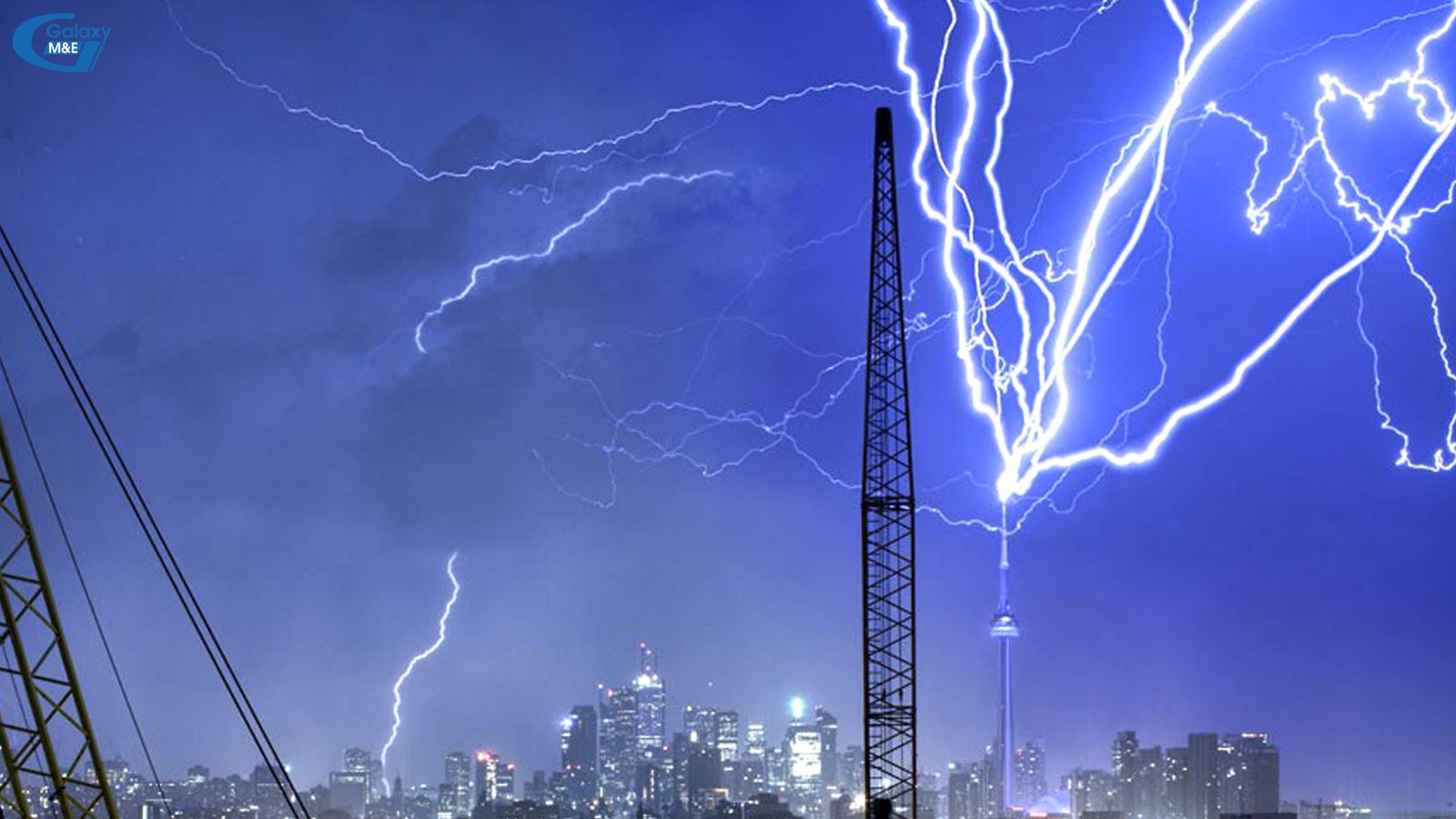
The importance of a lightning protection system is directly proportional to the level of the country or a city development.
4.3. Collect lightning by laser
Nowadays, modern buildings such as ammunition depots, nuclear, important computer centers (flight control, network control center...) require highly effective lightning protection methods.
To find 100% effective lightning protection solutions, businesses invest millions of dollars annually to laser lightning research. There are two research groups which include, Professor Bazelyan (Russian) and Professor Zen Kawazaki (Japanese). At the beginning, there were certain results. In Japan in 1997, after a lot of experiments, people have obtained lightning strikes twice by laser. In the opinion of experts, technically, this project is easy to implement. However, it is difficult to synchronize and expensive for a lightning protection. It can be said that spending money on a project is more expensive than buying gold. This research is still ongoing.
Faraday's lightning protection method.
4.4. Faraday's cage method
This is the method of using a metal cage to enclose the protected area. According to electromagnetic wave theory, this is the ideal method for lightning protection. This method is used by Faraday to protect certain special areas such as explosive and nuclear storage areas. However, this method is expensive and not feasible in practice for all constructions.
4.5. Positive prevention methods
There is one method that has been used effectively in recent years. It is early lightning forecast. Thanks to some modern equipments such as radars, satellites, discharge detection systems, it’s possible to predict the thunderstorms occurring in the area several hours to 30 minutes in advance. These methods are widely used in aviation, electricity, and are very safe for humans.
5. Synchronization is necessary to build an effective lightning protection system, synchronization is necessary
The above is an overview of the content of lightning protection methods being used in Vietnam and many parts of the world. Want to prevent the impact of lightning, depending on the characteristics of buildings, geography and climate, it needs professional advice from companies with experience in the field of mechanical engineering and construction. For those who are in charge of lightning protection services, it is possible to bring general peace of mind for the project but in terms of electromechanical, lightning protection is one of the important items of the electrical design and construction system. Any mechanical - electronic equipment can be struck by lightning. Therefore, the integration, synchronization and promotion of the overall efficiency is the core to make a safety shield for the project. That integration and synchronization could not replace other mechanical and electrical contractors. Therefore, with projects requiring strict technical, safety, especially lightning protection issues, investors should explore and choose companies with many years of experience. Years of experience is not a measure of the quality of a building, but it is a guarantee of the investment costs to buy the safety.
Galaxy M&E



